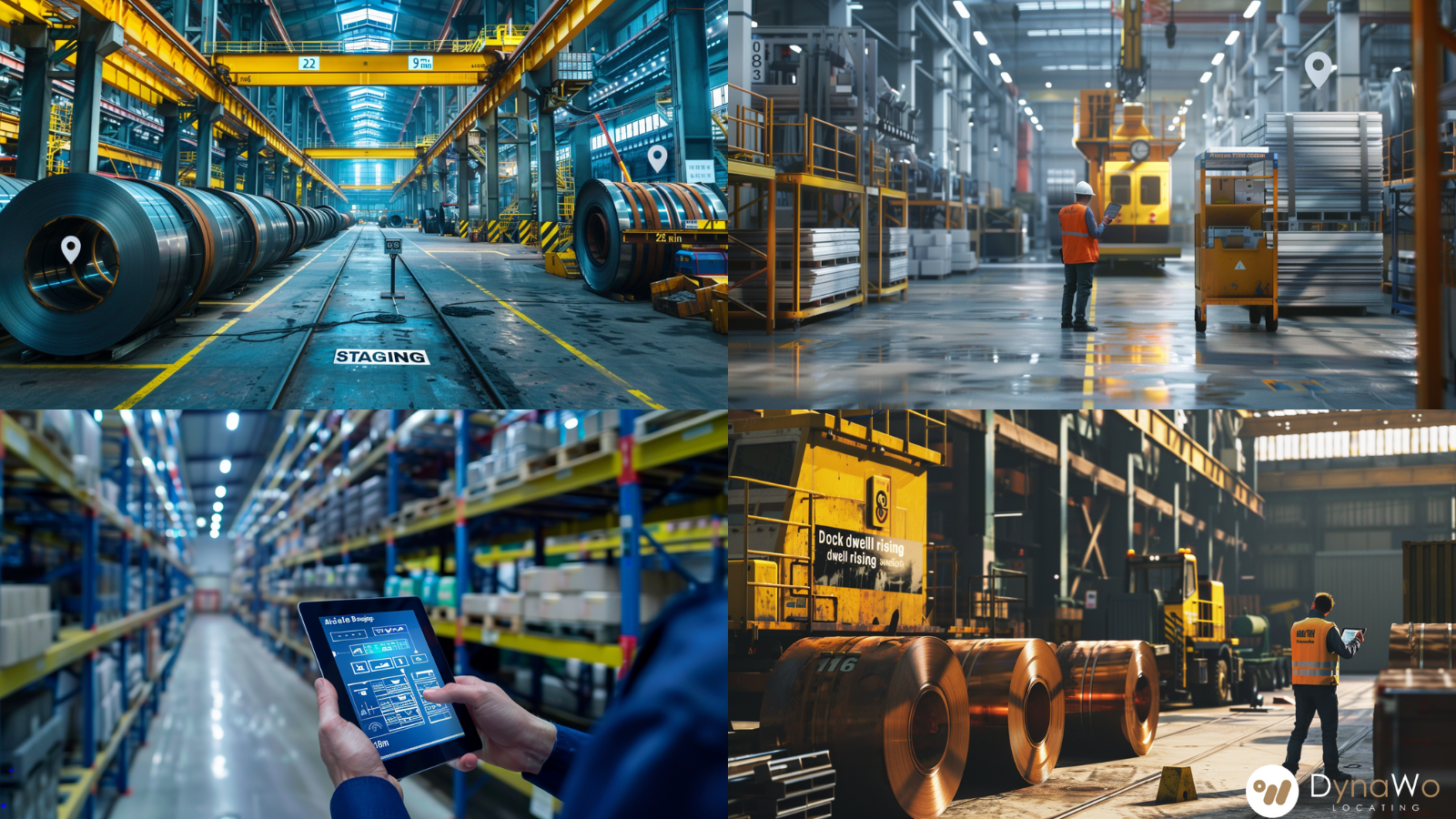If you’ve ever waited on a coil that was “somewhere,” you know how a minute turns into ten.
Steel reflects signals. Overhead gear shifts the layout by the hour. And in the middle of all that, people are trying to keep work moving without guesswork.
That’s why a useful RTLS doesn’t try to track everything. It helps you move what matters — right where the job happens.
The simple idea
- See it where you stand: aisles, bays, staging. No hunting.
- Hear only the important stuff: stuck too long, wrong bay, out-of-bounds, and pick mismatch.
- Confirm on the spot: a quick check before you lift or load — so the first pick is right.
- Tell the right person: nudge the area lead, press crew, or shipping — not everyone at once.
- Keep people in control: the system surfaces the moment your team makes the call.
What this feels like on the floor
- Metal plants (heavy rolls on racks): You walk up and see exactly which coil is in front of you. One tap confirms it’s the right one. If a coil sits in staging past your limit, the lane quietly pings the area lead. What changes: less searching, fewer mistakes, and smoother flow when demand spikes.
- Vehicle parts/stamping lines (carts and stacked parts): You can find the cart now, not after the press waits. If changeover dwell starts creeping up, you get a gentle nudge before it becomes a delay. A quick check at the stack makes sure the right set goes to the press the first time. What changes: on-time changeovers, fewer “where is it?” callbacks, and less back-and-forth.
- Steel service centers (orders built across bays): Everything for one order stays visible as a single set, even across multiple bays. At the loading bay, a “wrong piece” stop prompts a fast recheck before it hits the truck. Dock views show idle building up while you can still fix it. What changes: correct loads, shorter dock times, tighter schedules.
How you’ll feel it in the numbers
- Time-to-locate drops during peak windows
- Mispicks prevented by on-site confirmation
- Staging/dock dwell shrinks
- On-time changeovers and departures rise
- Optional: operator steps saved on common routes
How to start (fast and practical)
- Walk the floor together. Mark the few zones that truly matter: aisles, staging, bays, docks.
- Tag the usual suspects — the items that actually cause delays (coils, racks, die carts, and WIP stacks).
- Set three simple rules: “too long here,” “wrong bay,” “out-of-bounds.”
- Route nudges by role so the person who can fix it sees it first.
- Prove it on one line or hall, capture before/after, then expand with confidence.
You don’t need a perfect digital twin. You need the right visibility in the right places — tuned for steel, height, and motion — so work flows without added friction. The twist? We didn’t track everything — just what moved flow.
#RTLS #Intralogistics #Metals #Automotive #SteelServiceCenters #OperationalFlow #IndustrialIoT

